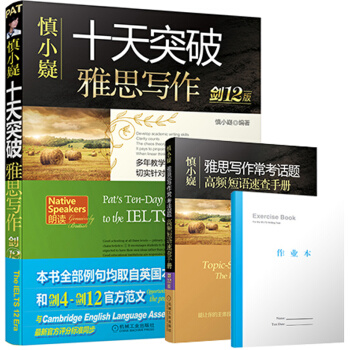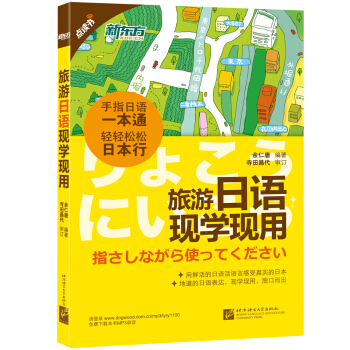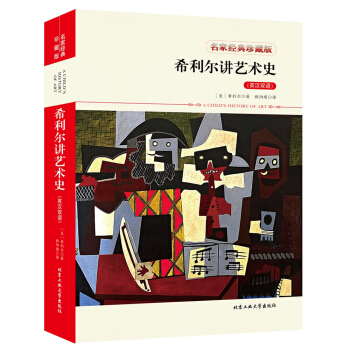

具体描述
编辑推荐
出版至今已经翻译成二十多种语言,全球销售数千万册。美国卡尔维特教育体系创始人希利尔倾情力作。
影响欧美几代青少年的人文经典,很受孩子欢迎的百年趣味读物。
内容简介
《希利尔讲艺术史》讲述的是世界艺术史,分为绘画、雕塑和建筑三部分。作者不是简单介绍那些赫赫有名的艺术家和他们流传千古的作品,而是通过一个个生活中的小故事,讲述作品诞生的过程——伟大艺术品和伟大的艺术家皆有赖于专注力、热情、天赋和机会,他们背后是一个崇拜艺术、欣赏美的时代。希利尔的目标在于,将艺术世界以生活化的姿态呈现在孩子们面前,唤起孩子们一生对于真、善、美的持续热爱。作者简介
希利尔(V.M.Hillyer),美国杰出教育家,毕生从事中小学教育,酷爱历史和艺术,喜欢旅行。出生于马萨诸塞州韦茅斯。哈佛大学本科毕业后,在纽约的布朗宁学校教了两年书,随后迁往巴尔的摩,成为卡尔沃特学校的D一任校长。希利尔创建的小学函授教育体系,即“卡尔沃特学校体系”,惠及世界各地的政府雇员、领事、军官和传教士的子女。当维吉尔希利尔校长于1899年到卡尔沃特学校走马上任时,他还是一个年仅二十四岁的毛头小伙儿。然而,他有着一颗教师的心——一种天生的异能,了解孩子们需要什么,知道如何讲孩子才能听明白,以及孩子成长的规律是什么。希利尔认为,孩子们写作、阅读和数学的基础必须夯实。在此基础上,他认为学生应当接受历史、艺术、地理和科学的系统教育,意在培育熟稔周遭世界各个方面的全面型学生。希利尔痛感传统教科书的枯燥无味,立志为孩子编写一套读起来兴味盎然的历史、地理和艺术读物,这便是《希利尔讲世界史》、《希利尔讲世界地理》、《希利尔讲艺术史》。精彩书评
维吉尔M.希利尔,这位卡尔弗特学校的校长,他开发小学教育体系,为他赢得了世界性的声誉。——《纽约时报》
抛开科学不论,历史、地理和艺术其实是孩子一生学识的基石:历史是时间的纵深,地理是空间上的广阔,艺术则是孩子心灵的寄托。
——维吉尔M.希利尔
这是一本极其少见的优秀课本,以它那清晰而引人入胜的内容、精致的艺术图片,不同于以往任何一本艺术史教材。
——《哈泼杂志》
目录
SCULPTURE雕塑篇
Chapter 1?The First Sculpture/第1章?第一尊雕像 2
Chapter 2?Giants and Pygmies/第2章?巨人和侏儒 7
Chapter 3?Cherubs and Kings/第3章?基路伯与国王 12
Chapter 4?Marbles/第4章?大理石雕塑 17
Chapter 5?Standing Naturally/第5章?自然站立 22
Chapter 6?The Greatest Greek Sculptor/第6章?古希腊最伟大的雕塑家 26
Chapter 7?After Phidias/第7章?菲狄亚斯之后 31
Chapter 8?Plaster Casts/第8章?石膏雕塑 36
Chapter 9?Tiny Treasures/第9章?小小珍品 40
Chapter 10?Baked-Earth Sculpture/第10章?陶土雕塑 44
Chapter 11?Busts and Reliefs/第11章?半身像和浮雕 48
Chapter 12?Stories in Stone/第12章?石雕中的故事 52
Chapter 13?The Gates of Paradise/第13章?天堂之门 56
Chapter 14?A Treasure Hunter and a Secret/第14章?寻宝者和秘密 60
Chapter 15?Among the Best/第15章?名列前茅 66
Chapter 16?Four in One/第16章?四项才能,集于一身 70
Chapter 17?Cellini Makes His Perseus/第17章?切利尼创作“珀耳修斯” 75
Chapter 18?A. M. — After Michelangelo/第18章?米开朗琪罗之后 79
Chapter 19?An Italian and a Dane/第19章?一个意大利人和一个丹麦人 82
Chapter 20?On a Stamp/第20章?邮票上的雕塑 85
Chapter 21?A Lion, a Saint, and an Emperor/第21章?狮子、圣徒和皇帝 89
Chapter 22?A Handsome Present/第22章?气派的礼物 93
Chapter 23?Thoughts for Thinkers/第23章?思想家的思想 96
Chapter 24?American Sculpture/第24章?美国的雕塑 99
Chapter 25?Among America’s Best/第25章?美国最杰出的雕塑家 102
Chapter 26?Daniel Chester French/第26章?丹尼尔?切斯特?法兰奇 106
Chapter 27?Women’s Work/第27章?女性的作品 109
Chapter 28?Twentieth-Century Sculpture/第28章?二十世纪的雕塑艺术 113
Painting
绘画篇
Chapter 1?The Oldest Pictures in the World/第1章?世界上最古老的绘画 118
Chapter 2?What’s Wrong With This Picture?/第2章?这幅画有什么问题呢? 123
Chapter 3?Palace Picture Puzzles/第3章?王宫里的拼图 128
Chapter 4?April Fool Pictures/第4章?错视画作 133
Chapter 5?Jars and Jugs/第5章?坛坛罐罐 138
Chapter 6?Pictures of Christ and Christians/第6章?关于基督和基督徒的绘画 141
Chapter 7?The Shepherd-Boy Painter/第7章?牧童画家 146
Chapter 8?The Angel-Like Brother/第8章?天使般的兄弟 151
Chapter 9?Born-Again Painters/第9章?复活的画家 155
Chapter 10?Sins and Sermons/第10章?罪孽与布道 159
Chapter 11?A Great Teacher and a Great Student/
第11章?了不起的老师和了不起的学生 164
Chapter 12?The Sculptor Who Painted Pictures/第12章?会绘画的雕塑家 168
Chapter 13?Leonardo da Vinci/第13章?列奥纳多?达?芬奇 174
Chapter 14?Six Venetians/第14章?六个威尼斯人 180
Chapter 15?A Tailor’s Son and a Master of Light/
第15章?裁缝的儿子和光影大师 185
Chapter 16?Flemings/第16章?佛兰芒人 190
Chapter 17?Two Dutchmen/第17章?两个荷兰人 196
Chapter 18?ü and Jr./第18章?“ü”和“小” 201
Chapter 19?Forgotten and Discovered/第19章?遗忘与发现 206
Chapter 20?Speaking of Spaniards/第20章?西班牙值得一提的画家 209
Chapter 21?Landscapes and Shop Signs/第21章?山水画与商店招牌 215
Chapter 22?Stirring Times/第22章?动荡的时代 219
Chapter 23?A Late Start/第23章?迟来的发端 225
Chapter 24?Three Englishmen Who Were Different/
第24章?风格迥异的三位英国画家 231
Chapter 25?Some Very Poor Painters/第25章?穷困潦倒的画家 236
Chapter 26?The Most Important Person/第26章?最重要的人物 241
Chapter 27?Postimpressionism/第27章?后期印象派 246
Chapter 28?Early Americans/第28章?早期的美国画家 251
Chapter 29?More Americans/第29章?更多的美国画家 256
Chapter 30?Two European Americans/第30章?两位欧裔美国画家 261
Chapter 31?Real-People Artists/第31章?平民画家 265
Chapter 32?Nons and Surs/第32章?非写实主义和超现实主义 270
Chapter 33?More Modern Painters/第33章?更多的现代画家 275
Architecture
建筑篇
Chapter 1?The Oldest House/第1章?历史最悠久的房子 282
Chapter 2?Houses for Gods/第2章?神灵的房屋 292
Chapter 3?Mud Pie Palaces and Temples/第3章?用泥巴建造的宫殿与神庙 298
Chapter 4?The Perfect Building/第4章?完美的建筑 305
Chapter 5?Woman’s Style Building/第5章?阴柔风格的建筑 312
Chapter 6?New Styles in Building/第6章?建筑上的新风格 315
Chapter 7?Rome Was Not Built in a Day/第7章?罗马不是一天建成的 321
Chapter 8?Trimmings/第8章?装饰 329
Chapter 9?Early Christian/第9章?早期的基督徒 335
Chapter 10?Eastern Early Christians/第10章?早期的东方基督徒 339
Chapter 11?Lights in the Dark/第11章?黑暗中的明灯 349
Chapter 12?Round Arches/第12章?圆拱 353
Chapter 13?Castles/第13章?城堡 359
Chapter 14?Pointing Toward Heaven/第14章?直指天堂 363
Chapter 15?In Praise of Mary/第15章?颂扬马利亚 368
Chapter 16?Country Cathedrals/第16章?乡间教堂 375
Chapter 17?Here and There/第17章?欧洲各地的建筑 379
Chapter 18?Open Sesame/第18章?芝麻开门 386
Chapter 19?Dome Trouble/第19章?穹顶的麻烦 392
Chapter 20?Backward and Forward/第20章?回顾与前行 397
Chapter 21?The Homes of England/第21章?英国的住宅 404
Chapter 22?Trademarks/第22章?“商标” 410
Chapter 23?Breaking Rules/第23章?打破规则 420
Chapter 24?The English Renaissance/第24章?英国的“文艺复兴” 425
Chapter 25?From Huts to Houses/第25章?从茅屋到住宅 430
Chapter 26?AL and OL/第26章?首都和国会大厦 439
Chapter 27?Rainbows and Grapevines/第27章?彩虹和葡萄藤 443
Chapter 28?The Scrapers of the Sky/第28章?摩天大楼 452
Chapter 29?New Ideas/第29章?新的思想 459
精彩书摘
When I was in kindergarten, I used to make a bird’s nest with round eggs and a bird sitting on top out of clay. Perhaps you have made something similar. That was sculpture, but I didn’t know it.When I was older, in the winter I used to make a snowman with a scarf around his neck, two pieces of coal for eyes, and a carrot for a nose. That was sculpture too, although I didn’t know it.
When I was still older, I used to take the soft part of a piece of doughy bread and shape it into a dog with a head, a tail, and feet. That was sculpture, although I didn’t know it. My mother didn’t know it either, so she sent me to my room for playing with my food.
So I was a sculptor until I was twelve years old — and I have never been a sculptor since.
But other boys and girls did not stop being sculptors when they became young men and women. Once upon a time a boy in a kitchen carved a lion out of a piece of butter and sent it to the table. He became a great sculptor when he grew up. His name was Canova1. I’ll tell you about him later.
People have made sculpture ever since the world was young. But at first the sculpture that people made was not very different from drawing. The artist first drew his picture on something flat. Then he carved the lines deeper so that, if it were outside, the rain would not wash the drawing away and the weather would not wear it down. This kind of drawing or sculpture is called .
These sunken-relief drawings have been found in different places around the world, like Peru where pilots flew over them and were quite surprised when they looked down at the ground and saw a whole collection.
Then after that, sculptors rounded the edges of the figures they had carved and cut away some of the background so that the figures stood out a little. This is called , or.
You may have a bas-relief in your pocket right now and not even know it. A penny, nickel, dime, or another coin, medal, or medallion that has figures on it is a bas-relief.
Then sculptors began to round the figure still more and cut away still more of the background so that the figure stood out more. This is called , for the figures are halfway out of the background.
Later sculptors cut away the background entirely so that the figure stood out all by itself. This is called because you can go around it. You will see such pieces of sculpture of men or animals in parks, public squares, and museums.
Long before the time of Christ, ancient Egyptian artists carved pictures in sunken relief on the walls of their great buildings, such as the Great Temple Gates of the Temple of Philae.
In these sunken reliefs, some figures are sitting and some are standing. All of them may look peculiar to you. Do you know why? They have two things quite unusual about them — two things quite impossible and several things very peculiar.
Here is the first thing: The feet are stepping directly sideways and the faces are all turned sideways too, but the shoulders appear as they are viewed from the front. Now of course, no one really walks that way, with head and feet sideways and shoulders in front view. So the first unusual thing is that the figure is twisted.
The second thing is the eye. What you see is the side of a face — not the front. Yet the eye appears as you would see it from the front, not from the side. All the Egyptian reliefs had the same peculiarly shaped eye and the same twisted bodies. Shoulders and eye are front view while everything else — hips, legs, and feet — are side view.
Can you guess why the Egyptians put the front and side view of a person together? Some say it was a way to show all the important parts of the body doing what they do best — legs walking, eyes looking, and shoulders and chest facing forward.
But there are other strange things to notice about these figures. The man and woman have very little clothing on and, although they are king and queen, they are barefooted. That’s because Egypt is a very warm country. In some warm countries even today neither rich nor poor wear shoes and socks. I once went to a dinner party in one of these warm countries and all of the ladies and gentlemen were barefooted. It seemed very peculiar to see the ladies and gentlemen, all gorgeously dressed and wearing many rich jewels, go to the table barefooted!
But to make up for having little ornamentation on their bodies, these Egyptian figures have a lot on their heads — not hats but crowns. These crowns mean something. The woman’s crown — she is a queen — looks like a bird cap. The bird is the vulture that feeds only on dead bodies. Above the vulture cap is a moon between two horns. The man’s double crown — he is a king — is called a . These figures are all sunken relief.
……
用户评价
作为一名对艺术有兴趣但缺乏专业训练的爱好者,这本书最打动我的地方,在于它提供的“解码工具”。很多时候看艺术品,尤其是抽象派或者概念艺术,总觉得“看不懂”,仿佛被筑起了一道无形的墙。这本书的厉害之处就在于,它提供了一套系统的分析框架,让你知道该从哪里入手去欣赏和理解这些作品。它不会直接告诉你“这幅画的价值在哪里”,而是教你如何观察笔触、色彩的运用、构图的平衡,以及艺术家可能想通过媒介传达的原始冲动。对于印象派的介绍尤为精彩,它详细对比了早期学院派对光线的处理和莫奈等人对瞬间光影的捕捉,这种对比教学法极其有效。读完后,当我再次面对那些看似杂乱无章的画作时,我不再是茫然地站在那里,而是能尝试去分析其中的肌理和意图。这种从“被动接受”到“主动探究”的转变,是任何一本纯粹罗列知识的书籍都无法给予的,它真正培养了读者的艺术鉴赏能力和批判性思维。
评分这本书简直是艺术殿堂里的一盏明灯,对于我们这种半路出家、对艺术史一窍不通的“小白”来说,简直是救星。我刚开始接触艺术史的时候,感觉就像在迷宫里打转,那些晦涩难懂的专业术语、眼花缭乱的流派更迭,简直让人望而却步。读了这本书,情况完全不一样了。作者的叙事方式极其平易近人,他没有直接抛出一大堆冰冷的概念,而是像一个经验丰富的向导,带着你一步步走过艺术史的长廊。比如,讲到文艺复兴时期的光影运用,他会用非常生活化的比喻来解释透视法和明暗对比是如何革命性地改变了人们对世界的感知,而不是干巴巴地罗列达芬奇或米开朗基罗的作品清单。更让我惊喜的是,这本书的排版和设计都非常用心,大量的精美插图穿插其中,清晰地展示了不同时期艺术风格的演变轨迹。我尤其喜欢它在介绍特定艺术家的部分,总能挖掘出一些有趣的小故事,让那些历史人物瞬间变得鲜活起来,不再是教科书上僵硬的雕像。可以说,它成功地将原本高高在上的艺术史,拉到了我们普通人能够触摸和理解的层面,极大地激发了我深入探索的兴趣。
评分这本书的结构安排堪称教科书级别的典范,逻辑清晰得让人佩服。我之前尝试过好几本艺术史入门读物,但常常在不同艺术阶段之间跳跃时感到迷失,这本书却构建了一个非常扎实的时间轴。它不是那种简单地按时间顺序堆砌史实的工具书,而是巧妙地将艺术风格的演变与当时的社会背景、哲学思潮紧密地联系起来。例如,在阐述巴洛克艺术的宏大与戏剧性时,作者没有孤立地讨论卡拉瓦乔的光影运用,而是详细解释了反宗教改革运动如何催生了这种更具感染力和情感冲击力的艺术语言。这种“因果”关系的梳理,让每一个艺术流派的出现都显得顺理成章,而不是突兀的风格转向。阅读过程中,我发现自己不仅记住了艺术家的名字和作品,更重要的是理解了“为什么”这些艺术会以这种形式出现。它教会了我如何用更深层次的眼光去解读艺术品背后的文化密码。而且,书中对不同文化圈艺术的并置讨论也处理得相当成熟,避免了单一西方视角的局限性,拓宽了我的视野,让人感到这是一部真正具有全球视野的艺术史概览。
评分真正让这本书脱颖而出的,是它那种潜藏在学术性之下的“人文关怀”。很多艺术史书籍在介绍艺术家生平时,往往只是简单地记录了他们的出生和死亡日期,或者提及其遭遇的政治迫害。但这本书在描述艺术家的生平时,总是能捕捉到那些细节——他们与同时代思想家的交流、他们对日常生活的观察、甚至是对艺术圈内竞争的态度。这使得艺术创作不再是孤立的事件,而是与鲜活的生命紧密相连。比如,在介绍某些前卫艺术流派时,作者会深入探讨艺术家们如何反抗僵化的社会规范,这种共鸣感是极其强烈的。它让我们明白,艺术史不仅是关于“画”的历史,更是关于“人”如何用创造力来应对和表达他们所处的时代困境和精神追求的历史。这种将艺术置于更广阔的人类经验维度中去考量的态度,让阅读过程充满了温度和启发性,它不仅仅是在“教”艺术史,更是在“启发”我们如何更深刻地理解人类文明的复杂性。
评分这本书的叙事节奏掌握得非常精准,完全没有一般艺术史著作那种拖沓冗长、让人昏昏欲睡的感觉。我通常阅读量比较大,对那些动辄数百万字的宏著望而生畏,但这本书却像精心剪辑的纪录片一样,节奏明快,张弛有度。在处理那些发展成熟、风格稳定的时期时,它会适当放慢速度,详细展开重要作品的剖析;而在过渡期或者风格剧烈变革的时期,它则会迅速抓住核心矛盾点进行阐述,让读者能快速跟上历史的脚步。此外,书中对不同艺术媒介的平衡处理也值得称赞。它并非只关注架上绘画,对雕塑、建筑、甚至摄影和装置艺术的介绍都给予了足够的篇幅和深度,展现了艺术发展的全景图。这种高效的信息传递方式,使得即便是碎片化的时间,也能用来阅读和吸收知识,非常适合现代都市人快节奏的生活。它既有深度,又不失趣味性,阅读体验极佳,让人忍不住一页接一页地读下去。
评分非常感谢京东商城给予的优质的服务,从仓储管理、物流配送等各方面都是做的非常好的。送货及时,配送员也非常的热情,有时候不方便收件的时候,也安排时间另行配送。同时京东商城在售后管理上也非常好的,以解客户忧患,排除万难。给予我们非常好的购物体验。信赖首选京东,默默哒一直看着它一年一年发展的越来越好,心里也在为京东发展壮大而加油打气。为什么我喜欢京东购物,因为可以当天买自己喜欢的商品,明天就可以到达客户的家中,为什么我所有的评价都相同,因为在京东买的东西太多太多,商品积累的太多没有评价,最佩服的,还是京东物流,有时晚上11点前动动手指,购买的商品,第二天上午就送到单位或者家里,还可以刷卡付款。自营的商品挺有保证,售后,有问题打专属客服热线。客服很赞,一句话的事儿,直接上门取件退,上门更换新商品,家电有价保,小宝贝们快来选购吧!既省钱,又节省时间,永远支持京东。
评分账户安全提醒:
评分套书,特价,10本99,内容不错,分了三个不同的内容,是写给青少年看的教材,很经典的。
评分很好很好很好很好很好很好很好很好很好
评分这次99任选10本的活动还是很给力的,发现还是有很多好书的
评分我为什么喜欢在京东买东西,因为今天买明天就可以送到。我为什么每个商品的评价都一样,因为在京东买的东西太多太多了,导致积累了很多未评价的订单,所以我统一用段话作为评价内容。京东购物这么久,有买到很好的产品
评分内容满意,但艺术史的插图却都是黑白的,有些遗憾。
评分搞活动买的很划算,现在东西大部分都在京东买了。就是会员每个月的五张运费券根本不够用,花钱买的会员为什么都不能包邮呢?唉!
评分在京东买书买的停不了了,已经囤了很多,书大多质量好,偶尔会有一两本纸质一般的,每次收到书都好开心。有券时买真是太优惠了,这个系列买了好几本,字体有点小,但质量不错,而且中英在同一页很方便,看小说学英语好。把希利尔的三本都买了,不过还没开始看,感觉应该不错
相关图书
本站所有内容均为互联网搜索引擎提供的公开搜索信息,本站不存储任何数据与内容,任何内容与数据均与本站无关,如有需要请联系相关搜索引擎包括但不限于百度,google,bing,sogou 等,本站所有链接都为正版商品购买链接。
© 2026 windowsfront.com All Rights Reserved. 静流书站 版权所有





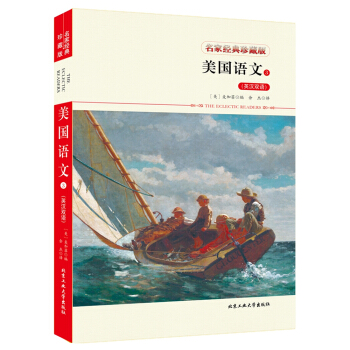

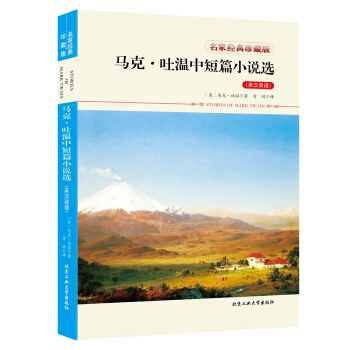
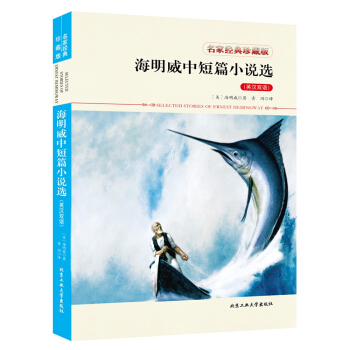
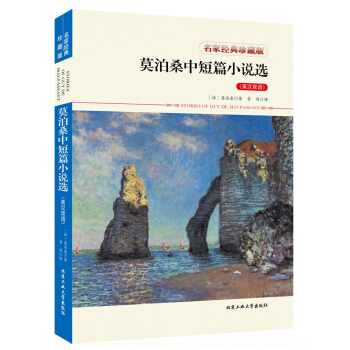


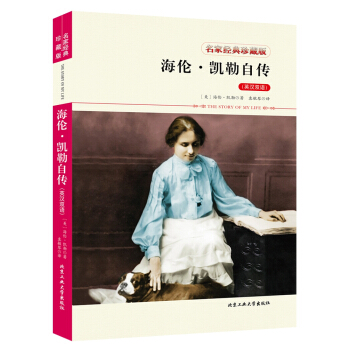

![飞鸟集+新月集(英汉对照注释版 套装全2册) [Stray Birds+The Crescent Moon] pdf epub mobi 电子书 下载](https://pic.windowsfront.com/12129055/5ad5a6c3N69d78fcb.jpg)
